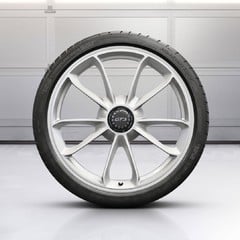What are the Rules for Children Travelling in Cars?
Read our guide on child car seat and seat belt laws in the UK
Ensuring the safety of children while travelling in vehicles is a top priority for parents. In this article, we will delve into the details of the UK's child seat laws, exploring the different types of restraints required for various age groups, as well as sharing the exceptions to the rules. Read on to find out more about the rules for children travelling in cars…
What is the child seat law in the UK?
Child seat laws are designed to ensure the safety of young passengers while travelling in vehicles. These laws require children under 12 years old or under 135cm tall (approximately 4ft 5in) to use an appropriate child restraint when travelling in a car or van.
In the UK, the type of child restraint required depends on the child's age, weight, and height. The rules mean that rear-facing baby seats are mandatory for infants under 15 months old, forward-facing child seats are needed for children over 15 months until they reach the seat's weight limit (usually around 4 years old), and booster seats or cushions for children are necessary between 4 and 12 years old, or up to 135cm tall.
Children over 12 years old or taller than 135cm can use an adult seat belt instead of a child seat or booster cushion. The driver of the vehicle is responsible for ensuring that all young passengers are using the appropriate restraint or seat belt, with a few exceptions allowed for unexpected necessary short trips and taxi rides.
The infographic below summarises the law regarding children traveling in cars:

What are the rules of using a child car seat or booster seat in the UK?
As we’ve highlighted above, there are certain rules for children travelling in cars that require young passengers to be restrained in a child seat or booster seat. As well as these rules, these are a number of guidelines outlined to ensure safe use of seats and boosters for children which are as follows:
- Children must use a child car seat until they are 12 years old or 135 centimeters tall, whichever comes first.
- The type of child seat or booster seat required depends on the child's age and size.
- Rear-facing baby seats are designed for infants up to 15 months old or until they outgrow the seat's weight limit.
- Forward-facing child seats are for children over 15 months old until they reach the seat's weight limit (usually around 4 years old or 18kg/40lbs).
- Booster seats or booster cushions are required for children between 4 and 12 years old or up to 135cm tall.
- All child seats and booster seats must be EU-approved and display an 'E' symbol.
- Child seats and booster seats must be appropriate for the child's weight and size and fitted according to the manufacturer's instructions.
- Children should always travel in an appropriate child seat or booster cushion in the back seat whenever possible, as it is the safest place in the vehicle.
- If a child is travelling in the front seat, the vehicle's airbag must be deactivated if using a rear-facing baby seat.
- It is the driver's responsibility to ensure that children are using the appropriate child seat or booster seat.
What car seat does my child need?
There are several types of child car seats designed for different age groups and sizes, here’s what you need to know:
Rear-facing baby seats (Group 0+)
Rear-facing baby seats are suitable for infants from birth up to 15 months old or until they reach 13kg (29lbs). These seats are installed facing the rear of the vehicle and provide the best protection for a young baby's head, neck, and spine.
Combination seats (Group 0+/1)
Combination seats for youngsters are suitable from birth to around 4 years old or up to 18kg (40lbs). They can be used rear-facing for infants and then switched to forward-facing once the child reaches 15 months old.
Forward-facing child seats (Group 1)
Forward-facing child seats are designed for children from 9 months to 4 years old or 9-18kg (20-40lbs). Because they support more weight, these seats are installed facing the front of the vehicle and have a harness to secure the child.
High-backed booster seats (Group 2/3)
High-backed booster seats are suitable for children from 4 to 12 years old or 15-36kg (33-79lbs) in weight. Used in conjunction with the vehicle's seat belt, these seats provide additional head, neck, and side protection.
Booster cushions (Group 3)
Booster cushions are to be used for children from 4 to 12 years old or 22-36kg (48-79lbs). These cushions raise the child's natural seat position to allow the vehicle's seat belt to fit properly across the shoulder and pelvis area.
i-Size seats
i-Size seats are designed based on the child's height rather than weight. They must be rear-facing until the child is at least 15 months old and can be used forward-facing after that. Another benefit of an i-Size seat is that it is compatible with ISOFIX mounting points in newer vehicles.
When can a child legally travel without a car seat?
In the UK, children can legally travel without a car seat under certain circumstances, but it is always recommended to use an appropriate child restraint whenever possible. Here are the few situations when a child can travel without a car seat:
In a taxi or minicab
Children under 3 years old can travel without a car seat if the vehicle doesn't have one available, which may be the case in a taxi or minicab. However, if the vehicle has an adult seat belt available, then children aged 3 and above should use it.
In a minibus, coach, or van
Children can legally travel without a car seat in a minibus, coach, or commercial vehicle if there is not one available, but must use an adult seat belt if one is fitted.
Unexpected journeys over a short distance
If an urgent unexpected journey is necessary and a child seat isn’t available, then a child over 3 years old can use an adult seat belt. However, it’s important to note this exemption does not apply to children under 3 years old.
When a child is medically exempt
If a child has a medical condition or disability that makes using a car seat unsuitable, they may be exempt from using one. In this case, a doctor's certificate should be carried in the vehicle to prove it so.
In classic cars (those made before 1965)
If a classic car does not have seat belts fitted, then children over 3 can travel in the back seats when supervised by an adult. Children under 3 years old must not travel in a classic car without being suitably restrained.
What age can a child sit in the front seat of a car?
In the UK, there is no specific age at which a child can legally sit in the front seat of a car. While it is not illegal for a child of any age to sit in the front seat as long as they are using the appropriate child restraint, it is generally safer for children to travel in the back seats.
This is because front passenger airbags can cause serious injury to young children if deployed. Always follow the manufacturer's instructions for your child's car seat and ensure it is appropriate for their age, weight, and height.
Find your family-friendly car at 1 Stop Car Sales
When searching for the perfect family-friendly car, you can rely on our selection of quality used vehicles 1 Stop Car Sales. As a reputable used car dealership, we offer a wide range of carefully inspected vehicles to suit various sizes of families. Our knowledgeable staff is dedicated to helping you find the ideal car that prioritises safety, comfort, and practicality for family use.
From spacious saloons and SUVs to efficient hatchbacks and estates, we have a diverse array of choices, ensuring that families can find a vehicle that meets their specific needs. With competitive pricing, financing options, and a commitment to customer satisfaction, stop by 1 Stop Car Sales in Peterborough to find the ultimate family-friendly car.









